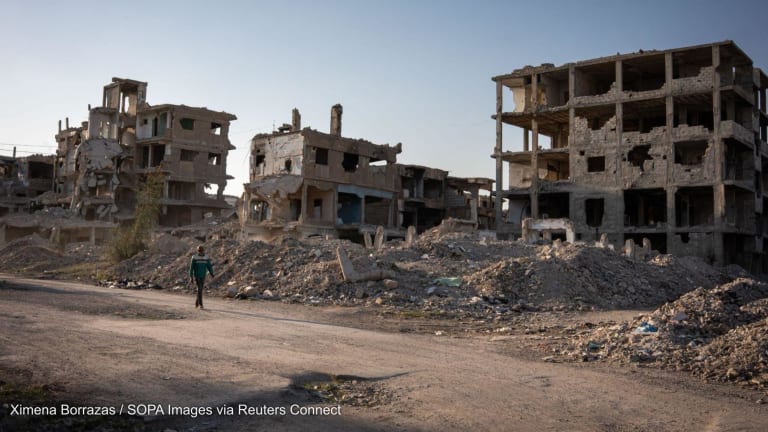
EDITOR’S NOTE: Development funding from nontraditional donors — such as emerging economies, social impact investors and philanthropists — have grown over the last few years. One area that these donors scored well with recipient countries: speed, according to this study by Overseas Development Institute experts Romily Greenhill, Annalisa Prizzon and Andrew Rogerson.
This study had three aims: 1) to present a provisional taxonomy of the new complex aid landscape, including flows of non-traditional development assistance; 2) to present a first-cut estimate of the volume and composition of development assistance flows within this new landscape; and 3) to explore the implications of the new complexity for partner country governments. Drawing on three country case studies, it has provided an overview of trends in different kinds of assistance at country level; a review of the economic, political, governance and aid effectiveness context informing the aid negotiation process; an exploration of government priorities when it comes to the purpose and ‘terms and conditions’ of assistance; an exploration of the arenas in which countries seek to engage with different providers of development assistance; and an assessment of whether countries are meeting their objectives when it comes to negotiating with traditional and non-traditional providers.
Given the limited sample size for the case studies, and the fact that findings tended to differ between Ethiopia/Cambodia on the one hand and Zambia on the other, the conclusions and policy recommendations presented here should be treated with some caution. Further case studies would help confirm the replicability of the findings across a wider group of countries, and explore trends across regions, fragility and income classifications and levels of natural resource endowment. We should also re-emphasise that this study focuses particularly on partner country governments; CSOs and citizens may have a different set of views and priorities.
Despite these caveats, we can reach some conclusions on the key questions addressed. Here, we present the key findings in response to each of the guiding questions. We then move to summarise the policy recommendations for governments, traditional donors and the international aid effectiveness community that emerged from the case studies.
Key findings on government priorities
Volume of flows from traditional and non-traditional providers
Development assistance flows grew substantially between 2000 and 2009, and their composition has shifted heavily towards what we call ‘non-traditional’ sources of development assistance.
Our ‘lower-bound’ estimate (i.e. excluding OOFs) suggests total development assistance grew from $64.8 billion to $173.3 billion between 2000 and 2009. In 2000, the non-traditional component of these flows was only $5.3 billion, or 8.1% of total development assistance. By 2009, non-traditional flows had increased tenfold to $53.3bn, making up 30.7% of total development assistance flows.
Our ‘upper-bound’ estimate (including OOFs) suggests total development assistance grew from $77.1 billion to $213.5 billion between 2000 and 2009. In 2000, NTDA was $17.6 billion; by 2009, it had grown to $93.5 billion,37 a fivefold increase. NTDA by this expanded definition rose from 22.8% of total development assistance in 2000 to 43.8% in 2009.
While these flows are distributed very unevenly across countries, they are growing fast in all the countries reviewed. In volume terms, non-DACs account for the bulk of non-traditional development assistance in Cambodia and Ethiopia; while global funds are very important in Zambia. Philanthropy and social impact investment are extremely small in all three countries.
Government priorities
The study found that countries in general appear to be welcoming the additional volume of finance and the choice that NTPs bring. Cambodia and Ethiopia were both found to be strategic about how they managed the new flows, and all countries expressed more positive than negative elements when discussing the new trends.
Consistent with the Paris Declaration agenda, ownership and alignment emerged as key priorities in relation to the ‘terms and conditions’ of development assistance. Non-DAC donors in particular were found to score well against these criteria. However, harmonisation and reducing fragmentation were not expressed as particular priorities. Governments appeared to reject the common (mis)interpretation of the Paris agenda on harmonisation as requiring all donors to negotiate with the government as a block. On the contrary, governments appeared more comfortable dealing with different groups of providers in different fora, perhaps to increase their negotiating power. Contrary to expectations, countries did not appear to struggle with growing fragmentation as a result of the growth of NTDA, seeming instead to welcome the additional choice.
One priority that emerged from the studies, which is not covered in the Paris agenda, was that of speed; again, non-DAC donors were praised for the speed of their operations. For traditional donors, improving the speed of disbursement procedures may help them become more attractive to recipients in a more competitive aid landscape.
In all countries, the low assessed risk of debt distress meant governments were comfortable taking on new borrowing. However, over time, governments will need to ensure they maintain debt sustainability, particularly when taking on less concessional flows.
Negotiation arenas
The study found that, in two of the case study countries (Cambodia and Ethiopia), there was little government interest in involving NTPs [nontraditional providers] in aid coordination mechanisms. These governments appeared more comfortable negotiating with different providers in different fora. A different finding emerged from Zambia, however.
Ability of developing country governments to negotiate with traditional and non-traditional providers
Overall, the case studies suggest that the emergence of NTPs is strengthening the negotiating power of governments, and may make it more difficult for traditional donors to influence policy. Cambodia and Ethiopia already appear to be using the existence of NTPs in this way. These new developments may therefore increase country ownership, understood as government choice over policies. They may, however, make it more difficult for traditional donors to raise concerns around corruption, human rights, poverty reduction or other issues. Greater ownership emerging in this way may also not necessarily lead to better results, especially in weaker governance environments. While all countries still saw mobilising resources as a key priority, and so were unwilling to turn down funding offers, donors may in the long run find that support considered too slow, burdensome or conditional is rejected in favour of support from NTPs.
However, the ability of countries to benefit from NTPs depends heavily on their ability to strategically manage those flows, and also on their economic and political context. Within our three case studies, Ethiopia is the best example of a country with a clear set of priorities when it comes to managing such flows, including climate finance. Ethiopia is also favoured, however, by its geostrategic importance, a large domestic market and the strong leadership of the former prime minister. Not all countries will be able to replicate such a position. Countries will need to build up their capacity to attract, monitor and effectively utilise traditional and non-traditional flows.
Policy recommendations
Recommendations for developing country governments
Be clear on priorities regarding the purpose, volume and terms and conditions of different kinds of assistance, and ensure these fit within overall national development strategies.
Take an active approach to negotiating with all kinds of assistance providers and be strategic in how relationships with providers are managed. Recognising the distinctive characteristics of providers will help in securing successful negotiations.
Recognise that national economic, governance and aid management contexts will determine negotiating capital when dealing with both traditional and non-traditional providers. Some of these (e.g. geostrategic importance) are outside of country control, but others (e.g. macroeconomic management) may be more amenable to influence by government.
Ensure new loans taken on from both traditional and non-traditional providers meet with national policies on debt sustainability, including concessionality thresholds.
It may not be necessary or advantageous to negotiate with all providers together, through joint aid coordination mechanisms. Separate negotiations may be more constructive in securing government objectives.
Explore opportunities to exploit new sources of development assistance, including the non-traditional. These flows are potentially significant at global level and can provide strong complementary funding to traditional development assistance, particularly as countries graduate to middle-income status.
Strengthen information collection on flows of development assistance from both traditional and non-traditional providers. There are good examples of countries collecting data from a wide range of providers, which others may wish to emulate.
Recommendations for traditional donors
Recognise that, in the ‘age of choice’, countries are likely to have more options when it comes to sources of development assistance. Ensuring assistance supports country ownership and is well aligned will be critical in ensuring traditional assistance is still in demand. Donors may also need to be clearer on their own ‘niche’ in relation to competition from other kinds of providers.
Direct donor conditionality is less likely to be effective in an age of choice. While recognising that traditional donors may have legitimate interests in dialoguing with countries around policy and governance issues, this may need to be done in different ways.
The current focus on results in many traditional donors may be more challenging to achieve in an age of choice, particularly in weaker governance environments. Donors are likely to have less direct influence over governments, and it may be more difficult to clearly identify and attribute results.
Recognise that governments may want to deal with different providers in different fora. Do not try to push governments into ‘one-size-fits-all’ coordination fora, unless there is a strong demand from government.
Improve the speed of disbursement, which has emerged as a key government priority.
Recommendations for the international aid effectiveness community
Recognise that country priorities on aid effectiveness may not be fully in line with those currently articulated in the Paris Declaration on Aid Effectiveness. Speed is an important missing element from the Paris Declaration, while concerns on harmonisation and fragmentation appear to be overstated. Ensure that future aid effectiveness agreements better reflect country-level priorities; in particular, some countries may wish to negotiate with different groups of providers separately.
Recognise that different providers have distinctive models of providing development assistance, which can each bring particular benefits and insights. A process of mutual learning between these approaches may be more constructive then attempts to agree a ‘one-size-fits-all’ approach to aid effectiveness.
Work with traditional and non-traditional providers to improve the availability, quality, consistency and level of detail of information on flows of development assistance, to promote better monitoring of flows at both global and national levels.
Republished with permission from the Overseas Development Institute. Read the original article.




